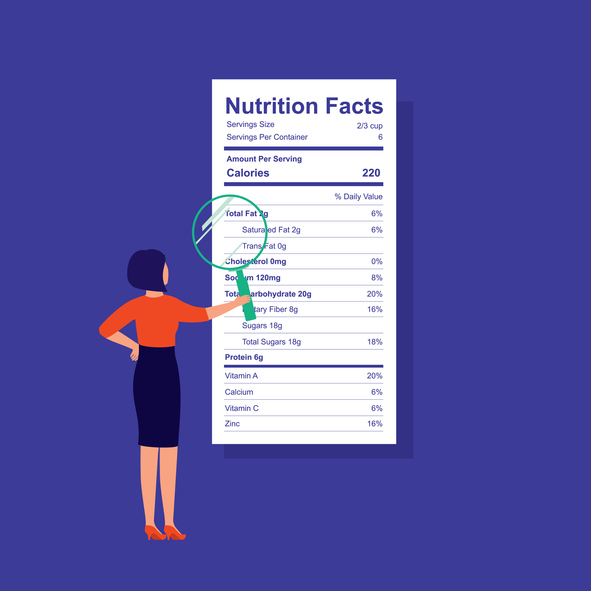Battle of the bags: Walmart goes Ziploc-only
In the latest of a growing wave of brand consolidations, Walmart has eliminated Glad and Hefty bags from its food-storage shelves - leaving customers with only two options: Ziploc or Walmart’s own private-label brand Great Value, according to Jack Neff’s February 4, 2010, article “Walmart Food-Bag Consolidation Wipes Glad, Hefty From Shelves,” for AdAge.com.
Walmart’s effort to streamline brand assortments is prompting retailers and customers alike to question whether one name-brand and one private-label option is enough - especially at a time when brand loyalty is suffering in favor of the almighty dollar.
The decision to oust Glad and Hefty from Walmart’s selection followed a shootout in a series of store tests that began in late 2009. The competition had high stakes, as Walmart makes up a third or more of the brands’ annual sales. The clearest winner in the Walmart bag war - besides Great Value - was Ziploc, with mixed results for Glad and Hefty. In trash bags, Glad and Hefty retained their places on the shelves along with Ziploc, but Hefty’s assortment was limited to its CinchSak line. Hefty’s manufacturer, Pactiv Corp, has also agreed to take over all private-label manufacturing for Walmart’s Great Value trash and food bags.
“If you look at the trash-bag category, you have to ask yourself, ‘Is there really a need to have more than one brand and private label?’” said Bill Pecoriello, CEO of Consumer Edge Research, Stamford, Conn. “I think Walmart is going to make similar moves in some of the cleaning areas and then across the portfolio.”
On a brighter note for Glad and Hefty, Walmart’s assortment decisions aren’t always permanent and are reviewed sometimes more than annually. In some lower-priority categories, Walmart is moving closer to practices of club and dollar stores, which often carry only one national brand - sometimes on a rotating basis - plus private label. That gives ousted brands a chance to win their space back while ratcheting up pressure for price and sales performance on all brands year-round.
FDA serves notice on serving sizes
 In an effort to combat the obesity epidemic in the U.S., the Food and Drug Administration (FDA) is encouraging manufacturers to print nutritional information, including calorie counts, on the front of food packages, according to William Neuman’s February 5, 2010, article “One Bowl = 2 Servings. F.D.A. May Fix That,” in The New York Times. And the information found on the front won’t necessarily look like today’s nutrition label: The calorie and nutritional information on many foods may be revised if portion sizes are increased to reflect a heavier population. Seeing how many calories are actually consumed - compared to what nutrition labels consider a serving - might give consumers a jolt when they reach for another handful of chips.
In an effort to combat the obesity epidemic in the U.S., the Food and Drug Administration (FDA) is encouraging manufacturers to print nutritional information, including calorie counts, on the front of food packages, according to William Neuman’s February 5, 2010, article “One Bowl = 2 Servings. F.D.A. May Fix That,” in The New York Times. And the information found on the front won’t necessarily look like today’s nutrition label: The calorie and nutritional information on many foods may be revised if portion sizes are increased to reflect a heavier population. Seeing how many calories are actually consumed - compared to what nutrition labels consider a serving - might give consumers a jolt when they reach for another handful of chips.
For cookies the serving size is generally one ounce, equal to two Double Stuf Oreos. For some chip brands, like Tostitos Hint of Lime, a serving size can be just six chips. For most children’s breakfast cereals, a serving is three-quarters of a cup. Parents who glance at a box of Lucky Charms and see that it contains 110 calories per serving may not realize that their children are eating several times that amount each morning at breakfast. And if a “single-serving” bowl of Healthy Choice soup has two servings according to the nutrition label, can it really be called single-serving?
Standard serving sizes were created by the FDA in the early 1990s to help consumers compare the nutritional values of different products. Congress required that the serving sizes match what people actually ate, so the FDA evaluated data from surveys of Americans’ eating habits taken in the 1970s and 1980s. Some nutritionists say those surveys may be suspect since people typically underestimate how much they eat, and there is general agreement that they are out of date.
Still, the solution is not as simple as merely bumping up the standard portions for some foods. Officials worry that doing so could send the wrong message. If the serving size for cookies rose to two ounces from one ounce, for instance, some consumers might think the government was telling them it was fine to eat more.
Word choice matters: Americans support ‘gays and lesbians’ more than they do ‘homosexuals’
Garbage man is to sanitation worker as gentleman’s club is to strip joint as homosexual is to gay/lesbian? The American population might be more accepting of people who identify as gay or lesbian than they are of those who identify as homosexual, even though the difference between the two is in name only. A CBS News/New York Times poll found that the wording of the question is crucial when it comes to determining whether Americans support allowing gays to serve in the military, according to Kevin Hechtkopf’s February 11, 2010, article “Support for Gays in the Military Depends on the Question,” for CBS News.
In the poll, 59 percent say they support allowing “homosexuals” to serve in the U.S. military, including 34 percent who say they strongly favor that. Ten percent say they somewhat oppose it, and 19 percent say they strongly oppose it. That number changes drastically when the question is changed to ask whether Americans support “gay men and lesbians” serving in the military. When the question is phrased that way, 70 percent of Americans say they support gay men and lesbians serving in the military, including 19 percent who say they somewhat favor it. Seven percent somewhat oppose it, and 12 percent strongly oppose it. When it comes to whether Americans support allowing gays to serve openly, there is also a difference based on the term used. When referred to as homosexuals, 44 percent favor allowing them to serve openly. When referred to as “gay men and lesbians,” the percentage rises to 58 percent.
No matter the term used, support for gays to serve in the military has risen since 1993, when the debate arose early in Bill Clinton’s presidency. In 1993, 42 percent said they favored allowing homosexuals to serve, with 21 percent saying they strongly favored it, compared to 42 percent who opposed allowing them to serve (29 percent strongly). In 1993, 37 percent said they supported allowing homosexuals to serve openly and 56 percent opposed.
